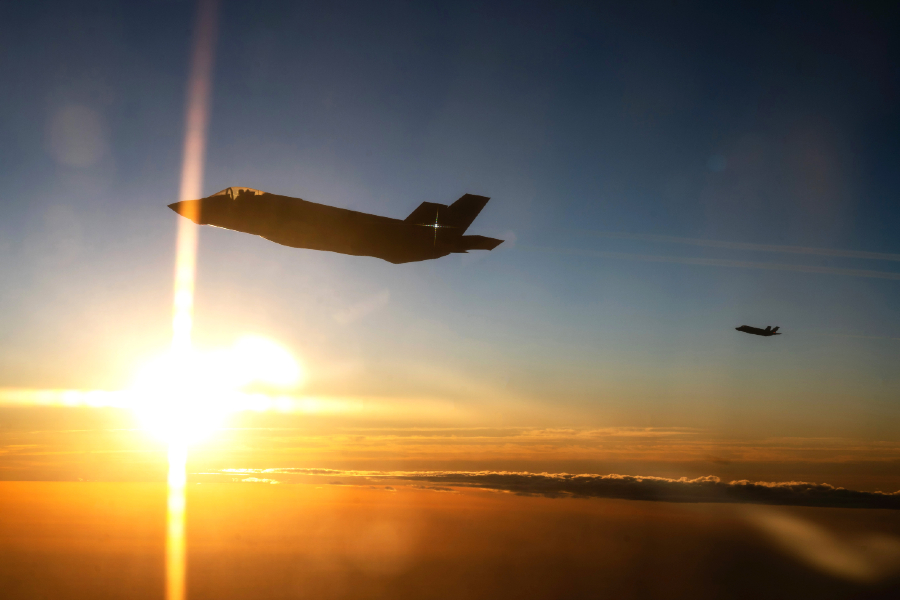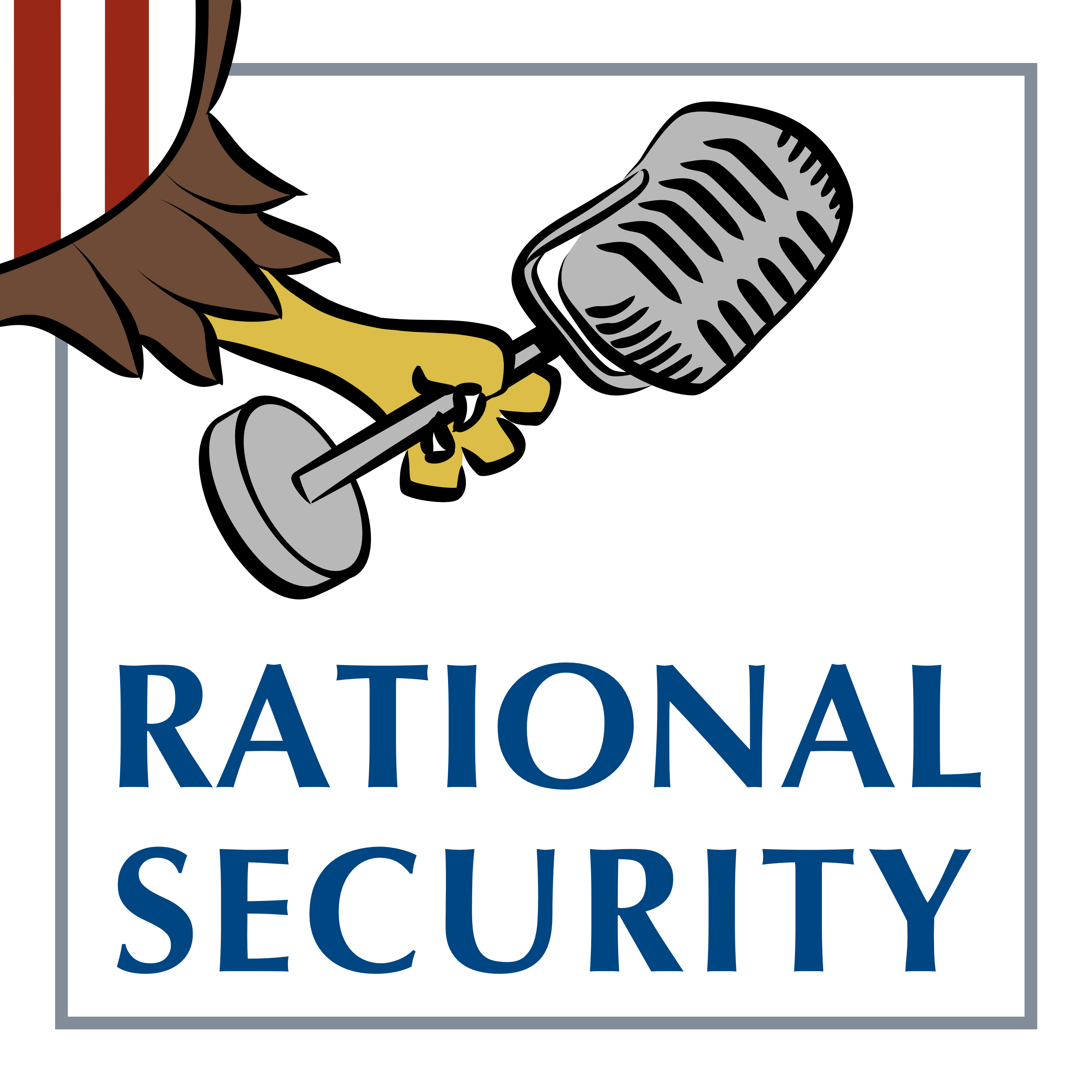The Future of Airpower Is Denial

Published by The Lawfare Institute
in Cooperation With

Editor’s Note: In a conflict with China over Taiwan or another dispute, the United States would be facing a formidable military foe and would find it difficult to establish air superiority. The Stimson Center’s Kelly Grieco and Maximilian Bremer argue that, in a crisis, the United States should initially focus on air denial, which will exhaust Chinese forces and limit the risk of unwanted escalation.
Daniel Byman
***
From Iraq to Afghanistan, the United States ruled the skies for more than three decades. This dominance created an entire generation of military leaders and policymakers who have known only uncontested skies, making the ability to project overwhelming airpower a bedrock assumption of U.S. planning. Against a near-peer adversary like China, that comforting assumption of quick air superiority no longer holds. The United States now needs new operational concepts that acknowledge this reality while preserving the ability to fight effectively.
When Adm. Samuel Paparo, commander of U.S. Indo-Pacific Command, testified before Congress earlier this year, he said that, in a conflict with China, his task would be to “contest air superiority” and provide only “windows of air superiority”—short periods when U.S. forces could operate without “prohibitive interference” from Chinese air and missile threats. This plan marks a break from decades of U.S. military strategy, which assumed the United States could quickly seize control of the skies and turn that advantage into decisive victory. While necessary given China’s growing ability to challenge U.S. air dominance, Paparo’s remarks stop short of offering a clear operational concept for effective operations.
The answer is a new phased strategy—what we call culmination-based air control (CBAC)—that begins with air denial and transitions into air superiority. In the opening stages, denial-based forces function as an ablative layer, absorbing and degrading an adversary’s initial attacks in order to buy time and create openings for traditional fighters and bombers to exploit. A U.S.-led air campaign would thus progress from denial through windows of air superiority to sustained control of the skies. This approach would provide a robust, cost-effective deterrent against China while reducing escalation risks and preserving strategic options for both offense and defense.
Why Offense-First Airpower Is Risky
U.S. airpower was never omnipotent, even at the height of its air dominance. In 1991, despite achieving rapid air superiority, U.S. forces failed to destroy a single Iraqi Scud missile launcher. A few years later in Kosovo, Yugoslavia’s mobile air defense largely survived NATO’s bombing campaign. These lessons were not lost on potential adversaries, particularly China, which began developing “counter-intervention” capabilities to deny U.S. air superiority.
Today, China fields sophisticated ground-based air defense systems, including Russian S-400s and domestically produced HQ-9 surface-to-air missiles, capable of engaging aircraft at extended ranges and high altitudes. In the air, China’s growing fleet of airborne early warning and control aircraft surpasses the U.S. fleet in numbers, if not capabilities, while its air-to-air fighter fleet is increasingly advanced and growing rapidly. China’s air defense network is dense, layered, and deadly, making air superiority increasingly difficult and costly to gain and maintain. If the United States were to employ the same approach against China that it used against Iraq in 1991 or 2003, it would likely lose hundreds of aircraft and pilots and still fail to suppress China’s integrated air defenses, not only leaving it unable to achieve air superiority but risking its ability to contest the skies at all.
This leaves the United States with a stark choice: double down on an offense-first strategy aimed at achieving air superiority, or adapt to the new operational realities by leveraging the defender’s advantage. In truth, it is not much of a choice. Persisting with the traditional offense-first approach undermines the credibility of U.S. extended deterrence, raises escalation dangers, and imposes unsustainable costs.
First, with an offense-first air superiority strategy, U.S. extended deterrence depends not on preventing China from gaining air superiority, but on whether the United States and its allies can gain and maintain it. China’s large and advanced surface-to-air missile arsenal gives Beijing reason to doubt the U.S. capability to attain superiority, raising the risks it could initiate a conflict and attempt a fait accompli. Air superiority is often treated as a binary—either one side or the other has it—but in reality, it exists on a spectrum, as seen in Ukraine today, where neither side has superiority. This nuance underscores the challenge Washington faces: In today’s missile age, it is generally easier to deny air superiority than to gain it outright.
Second, an offense-first strategy increases the risks of inadvertent escalation. To gain and maintain air superiority over Taiwan, for example, the United States would need to neutralize the threat from China’s integrated air defense systems, including the surface-to-air missile systems deployed along its southeastern coast that put the skies over Taiwan and the strait within range. The prospect of significant U.S. losses would create intense pressure to strike these defenses, especially command-and-control systems and missile launchers, to achieve air superiority. Pursuing air superiority—as some advocates suggest—risks crossing nuclear thresholds, particularly given China’s intermingled conventional and nuclear command-and-control systems. Moreover, if Beijing doubts Washington is willing to run such risks—which is likely early in a conflict—U.S. threats lose credibility.
Finally, an offense-first strategy is fiscally unsustainable given the rising costs of advanced aircraft. The U.S. Air Force plans to procure a new fighter, the F-47, which it calls “game-changing” for achieving air superiority. The price tag is roughly $300 million per aircraft. Collaborative combat aircraft—advanced drones designed to operate alongside the F-47—cost about $36 million apiece. These high costs will inevitably constrain procurement, leaving the Air Force vulnerable to attrition and weakening the credibility of U.S. deterrent threats.
The Air Denial Alternative
Rather than immediately seeking air superiority, the United States should pursue air denial in the initial phase. Drawing on British naval theorist Julian Corbett, who argued total command of the seas was impracticable, air denial is the practice of one air force limiting another air force’s ability to operate effectively without fully controlling the airspace itself. Instead of relying primarily on small numbers of capable but costly high-end fighters and bombers, air denial calls for a mix of crewed aircraft and a large number of mobile surface-to-air missiles and anti-aircraft guns, as well as uncrewed and autonomous systems.
This approach layers cyber disruptions, electromagnetic jamming, air-based air defenses, and ground-based air defenses in increasing degrees of strength. And it operates both horizontally, across both close and long ranges, and vertically, from high to low altitudes. The outer layer consists of a mix of sensors, platforms with air-to-air missiles, and cyber and electromagnetic capabilities, along with ground-mobile long- and medium-range surface-to-air missiles (SAMs) to cover approaches from high altitudes. The inner layer includes thousands of anti-aircraft guns, short-range and man-portable SAMs, rockets, drones, and loitering munitions to deny control of the air littoral—the airspace between the ground and the altitude where high-end fighters and bombers typically operate.
Air denial offers multiple strategic advantages. It is a more credible deterrent than the pursuit of air superiority because it forces Chinese leaders to confront the far more difficult challenge of controlling the skies above their forces. Since offensive ground and maritime operations are unlikely to succeed without air superiority, convincing Beijing it cannot achieve the air control required for such operations strengthens extended deterrence.
At the same time, air denial contests the air domain without requiring strikes on Chinese mainland air defenses, command-and-control networks, or air bases. Instead, it targets Chinese forces and capabilities beyond the mainland using mobile missiles, long-range sensors, and swarms of low-cost drones to complicate and disrupt Chinese operations while expending their munitions. By contesting rather than seizing control of the skies, air denial places the burden of escalation on Beijing, which would need to strike U.S. or allied bases to achieve air superiority.
Air denial also combines large numbers of low-cost systems with a limited mix of high-end aircraft to maintain persistent pressure on adversaries. This approach avoids the prohibitive costs and risks of building the Air Force around small numbers of expensive platforms. By forcing China to expend costly munitions on cheap targets, it reverses the cost-exchange ratio and shifts the economic burden of sustained conflict onto Beijing.
Beyond the False Dichotomy
Air denial does not preclude air superiority; instead, it delays its pursuit until conditions are favorable while simultaneously imposing significant costs and risks on China for operating in contested airspace. In CBAC, denial forces act as an “ablative layer,” absorbing strikes and degrading Chinese capabilities to the point where limited air superiority becomes attainable at reasonable cost. U.S. and coalition forces can then shift from denial to superiority, exploiting gaps to expand air control.
This approach provides strategic flexibility, allowing decision-makers options to maintain defensive positions, escalate operations, or negotiate based on evolving circumstances. Implementing it requires that U.S. and allied air forces adopt air denial as a core mission alongside traditional air superiority, developing new tactics, techniques, and procedures for denial-based operations, and prioritizing larger numbers of low-cost, attritable systems.
The era of uncontested U.S. air dominance has ended. The question is whether the United States will adapt proactively through new operational concepts like air denial and CBAC or be forced to learn harsh lessons in wartime.






